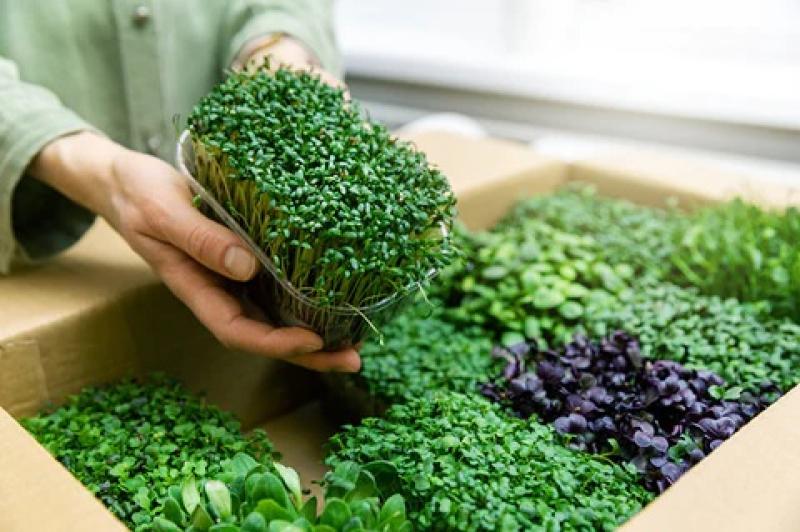The microgreens market includes farming and selling of young vegetable and herb plants that are typically harvested when they are between the sprout and true leaf stage. Microgreens carry higher concentrations of vitamins, minerals, and antioxidants compared to their mature counterparts. They are easy to grow, requiring minimal space and resources.
Global Microgreens Market is estimated to be valued at US$ 3.71 Billion in 2024 and is expected to exhibit a CAGR of 10% over the forecast period between 2024 to 2031.
Key Takeaways
Key players operating in the microgreens market: Key players such as AeroFarms, Fresh Origins, Gotham Greens, Good Leaf Farms, Living Earth Farms, Farmbox Greens, Chef’s Garden, Bowery Farming, Teshuva Agricultural Projects Ltd., Madar Farms, and Metro Microgreens collectively account for over 30% of the global market share. These companies are focusing on automated indoor vertical farming and international business expansion to cater to the growing demand.
Growing demand in the market: Rising health consciousness and preference for fresh, nutritious ingredients in daily cooking is driving the Microgreens Market Growth. Their high nutrient concentration and versatility for use in salads, sandwiches and dishes is increasing their popularity as a superfood. The microgreens market is expected to further gain traction across both retail and foodservice segments.
Global expansion of the market: Leading microgreen producers are expanding their global footprint through partnerships, acquisitions and overseas farms. North America currently dominates the global microgreens industry. However, regions like Europe and Asia Pacific are emerging as high growth markets led by factors such as rising disposable incomes, growing organised retail, and increasing emphasis on sustainability.
Market key trends
Automated indoor vertical farming is a key trend gaining traction in the microgreens market. Leading players are increasingly adopting controlled environment agriculture techniques such as hydroponics and aeroponics to grow microgreens without reliance on outdoor conditions or arable land. This ensures consistency in yield and quality, as well greater harvest cycles. With land and water becoming scarce resources, automated vertical farming is likely to drive sustainable growth of the microgreens industry over the coming years.
Porter’s Analysis
Threat of new entrants: High capital requirements for facilities and infrastructure as well as the expertise required to cultivate microgreens poses barriers for new players in the industry.
Bargaining power of buyers: As microgreens are an up and coming crop with varied uses across food industry, buyers have significant bargaining power due to availability of substitutes and commoditization.
Bargaining power of suppliers: Specialized equipment and microgreens seed varieties are supplied by few players, giving them strong bargaining power over cultivators.
Threat of new substitutes: Limited threat as microgreens are novel greens that provide nutrition along with variety in flavors, textures and colors not found in conventional produce.
Competitive rivalry: Industry sees intense competition due low brand loyalty and ease of replicating cultivation methods leading players to compete on quick service, diversified product range and innovative farm formats.
Geographical Regions
North America accounted for the largest share due to strong produce consumption culture and increasing consumer preference for locally Microgreens Market Regional Analysis greens.
Asia Pacific excluding Japan is the fastest growing regional market for microgreens fueled by emerging economies like China and India experiencing rapid urbanization along with rising health consciousness. Growing influence of Western culinary trends is driving newer crop experimentation in the region.
